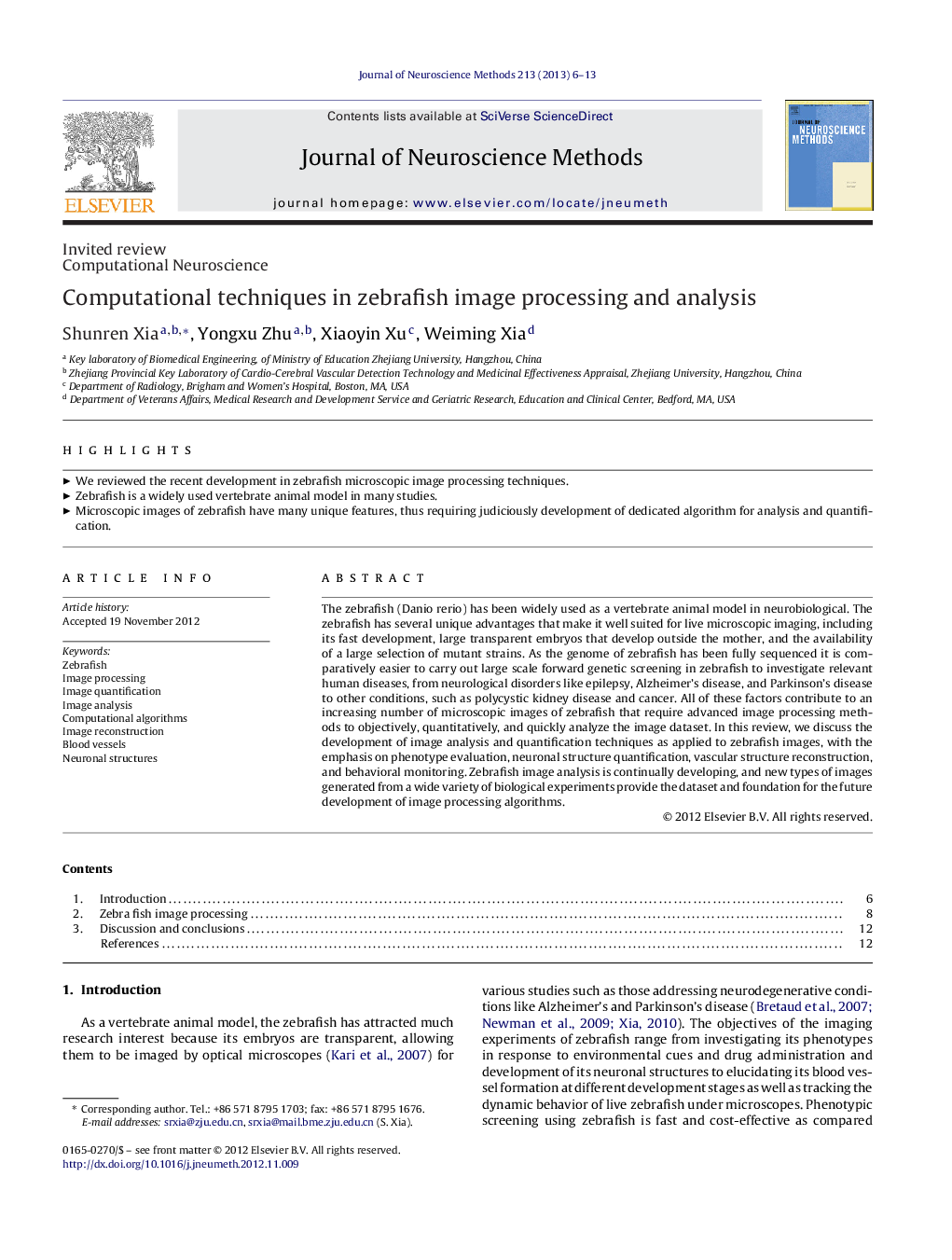| Article ID | Journal | Published Year | Pages | File Type |
|---|---|---|---|---|
| 6269424 | Journal of Neuroscience Methods | 2013 | 8 Pages |
The zebrafish (Danio rerio) has been widely used as a vertebrate animal model in neurobiological. The zebrafish has several unique advantages that make it well suited for live microscopic imaging, including its fast development, large transparent embryos that develop outside the mother, and the availability of a large selection of mutant strains. As the genome of zebrafish has been fully sequenced it is comparatively easier to carry out large scale forward genetic screening in zebrafish to investigate relevant human diseases, from neurological disorders like epilepsy, Alzheimer's disease, and Parkinson's disease to other conditions, such as polycystic kidney disease and cancer. All of these factors contribute to an increasing number of microscopic images of zebrafish that require advanced image processing methods to objectively, quantitatively, and quickly analyze the image dataset. In this review, we discuss the development of image analysis and quantification techniques as applied to zebrafish images, with the emphasis on phenotype evaluation, neuronal structure quantification, vascular structure reconstruction, and behavioral monitoring. Zebrafish image analysis is continually developing, and new types of images generated from a wide variety of biological experiments provide the dataset and foundation for the future development of image processing algorithms.
⺠We reviewed the recent development in zebrafish microscopic image processing techniques. ⺠Zebrafish is a widely used vertebrate animal model in many studies. ⺠Microscopic images of zebrafish have many unique features, thus requiring judiciously development of dedicated algorithm for analysis and quantification.
